First Theatrical Release: January 29, 1959
First Home Viewing Release: October 14, 1986
My Rating: 3/5 stars
Where I Found It: My family’s VHS collection — it’s my sister’s, and it’s the 1997 release.
Bechdel Test Score: Passed. This movie has an abundance of female characters — for once they outnumber the males. We have Aurora, her mother, Flora, Fauna, and Merryweather (the good fairies), and Maleficent. The good fairies give the movie the easiest pass, as they are almost always talking to each other, mostly about Aurora.
Ah, Sleeping Beauty, arguably the most passive of all fairy tale princesses, the one who literally sleeps through all the action. Disney’s version doesn’t do much to redeem her; she’s arguably the Disney princess with the least personality — which is a shame, because we won’t get another princess movie for 30 years (The Little Mermaid, 1989).
Who Was Gone The Day Personality Was Handed Out?
Prince Phillip, Aurora, and Aurora’s mom: *raise hands*
 In this movie, Disney lavishes personality on the parents and caretakers at the expense of our supposed protagonists. Out of the “big six” in the Disney princess franchise (Snow White, Cinderella, Aurora, Ariel, Belle, and Jasmine), Aurora is the one and only to have a mother — although her only purpose in the movie seems to be to hug her daughter (once when she’s an infant, and once when she returns as a teen). She has no name and no speaking lines. The other parents, both biological and adoptive, fare much better.
In this movie, Disney lavishes personality on the parents and caretakers at the expense of our supposed protagonists. Out of the “big six” in the Disney princess franchise (Snow White, Cinderella, Aurora, Ariel, Belle, and Jasmine), Aurora is the one and only to have a mother — although her only purpose in the movie seems to be to hug her daughter (once when she’s an infant, and once when she returns as a teen). She has no name and no speaking lines. The other parents, both biological and adoptive, fare much better.
Walt’s original vision was to have the three good fairies be “nearly identical,” but the character writers thought it would be more interesting if each of them had her own personality. This works — perhaps a little too well, as their personalities steal the show and even the glory. One can easily pinpoint Flora as “the leader,” Fauna as “the sweet one,” and Merryweather as “the hothead.” Even as a child, I remember thinking that the fairies seemed the most REAL of anyone in the movie.
Second to the fairies in the personality department are Phillip and Aurora’s fathers, Hubert and Stephan, who, while not appearing on any merchandise, at least have enough personality to be remembered as “the boisterous one” (Hubert) and “the serious one” (or, if you’re me, “the one who looks like my dad”) (Stefan). They get an extended drinking scene in which they dream of and bicker over Aurora’s return and her marriage to Phillip.
One could hardly say Maleficent is without personality, although her motives are not as clear as her predecessors’. The Evil Queen was jealous of of Snow White’s beauty; the Wicked Stepmother was interested in her own daughters’ social advancement; Maleficent is … upset about not being invited to a party? And this is enough to eventually turn her into a dragon and have her call upon “all the powers of hell” (a phrase that made me gasp when I was younger.) Lots of people like Maleficent’s ability to be evil just for the sake of being evil, and yeah, I’m kind of in that camp.
But what can we say to define the personalities of our leading lady and her beau? For the first time Disney allowed its prince a name and some speaking lines, but unfortunately they don’t define his personality so much as make him seem like a bit of a creeper. (I mean, he watches some innocent peasant girl in the woods who clearly thinks she’s alone, then takes advantage of what he overheard to insert himself into her fantasy? He may have looked nothing like the man she saw in her dream!)

But I DO love this song. And yeah, I had some pretty hot dreams about strangers when I was 16, too, Briar Rose.
Aurora always struck me as more of a senior in college than a 16-year-old, but her age shows when she runs crying to her bedroom after her guardians tell her she can’t see the boy she likes. And thus, she joins in a long and unvaried tradition of Disney princesses dissolving into tears at least once in their movies.
Still, her crying is better than the stoned expression she wears for most of her other waking scenes. (She seems to be less alert in general in her “princess” role — she crosses the room to kiss her mother as if she’s in a trance when they are finally reunited. Is Disney saying something profound here about the freedom she loses when she ceases to be a peasant? About the constraints that come with the crown and the fancy dress and the rich suitor? Or is she simply less expressive as a stylistic choice, as Disney wanted to create something of a “living illustration” with this film? We will probably never know, but all around, it’s kind of creepy.)
Who Slept Through Plot Development?
Okay, so neither fairy tales nor Disney are known for having airtight plots. But Disney’s legacy was to create movies that people would watch again and again and again … and when you’ve watched them as many times as I have, you can’t help but scratch your head once in a while.
For example, when Maleficent first curses Aurora, her father decides to destroy every spinning wheel in the kingdom. Okay, you can’t blame the guy … but the curse was not set to come true until her 16th birthday. And spinning wheels aren’t merely ornamental. So did he tax his citizens exorbitantly during those 16 years so they could afford to import thread from non-cursed kingdoms? Did the King pay unemployment to all the poor spinsters who lost their livelihood? And why didn’t he just keep allowing domestic spinning to continue until, say, Aurora’s 15th birthday? That would’ve saved him 15 years of import tax.
And meanwhile, the fairies. They resolve that they will not use magic to raise Aurora, which seems wise, considering that their magic is what ultimately gives their secluded hideout away. And yet, when it comes time to prepare for Aurora’s 16th birthday, it’s clear they do not know how to sew or to cook without magic. These women have been raising a child, without TV dinners or a nearby mall, since birth. HOW DID THEY GET AWAY WITH NOT KNOWING HOW TO COOK OR SEW? Perhaps they had a stash of money to liberally buy new clothes as Aurora grew, but there weren’t no Pizza Hut delivery back then. Aurora might be the first Disney princess to have earned her slim frame through actual malnutrition.
Finally, if everyone was so worried about Aurora’s fateful 16th birthday, why did they bring her home on her 16th birthday?!?!? They couldn’t have waited ONE more day? What’s the point of hiding her for 16 years if you’re going to bring her back to her very public home on the day the curse is set to take effect?
The good news is, the fairies saved Aurora again in the end, so perhaps their nearly deadly oversights can be forgiven.
Spinsters to the Rescue!
We’ve all heard the flak about how Disney teaches girls that they need to be rescued by a man, blah blah blah. But if the complainers actually watch some of the films, they might be surprised.
Prince Phillip is basically an epic fail when it comes to rescuing Aurora. So how does he manage to get to her for true love’s kiss?
- The fairies use their magic to break him out of Maleficent’s dungeon.
- The fairies use their magic to turn Maleficent’s booby traps into rainbows and flowers
- The fairies use their magic to turn Maleficent’s crow, who is about to tell her how it’s all goin’ down, into a statue
- The fairies give Prince Phillip the magic shield he uses to fend off dragon Maleficent’s flames
- The fairies enchant his sword before he throws it at Maleficent. He doesn’t even have to fence with her! Just one toss of the enchanted sword, and done!
The one thing he manages to do on his own is kiss Aurora awake. Which he never could have done if her three mommies hadn’t helped him.
Interesting tidbit: Disney claims its version of Sleeping Beauty is based on Charles Perrault’s, but in Perrault Sleeping Beauty wakes up because the 100 years of her curse have expired, and NOT because the prince kissed her. In fact, he doesn’t kiss her until she is awake. Perrault’s prince knew something about consent that, sadly, did not carry over into Disney’s adaptation.
(Of course, Disney also left out the parts about how the prince married sleeping beauty secretly because he feared his mother’s reaction, and how his mother, who was part ogre, desperately wanted to eat his children and his wife. Now, that’s a D2V sequel idea if I ever heard one!)

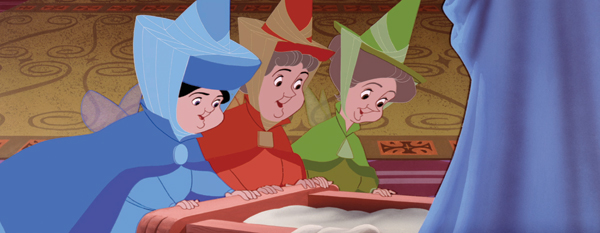
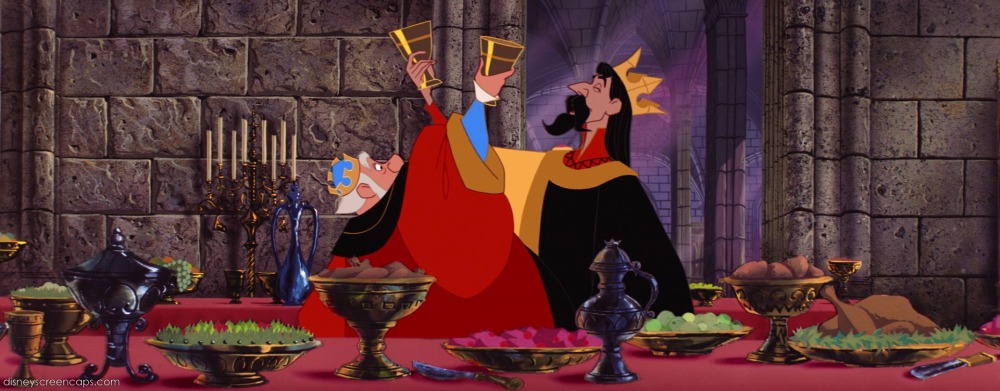
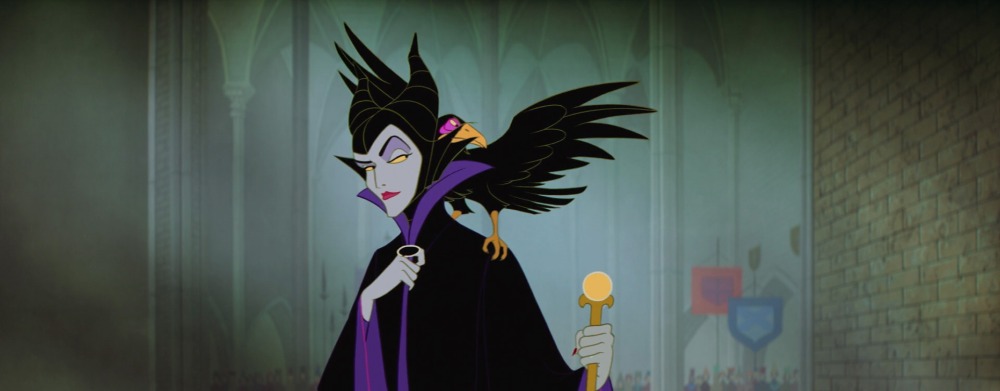
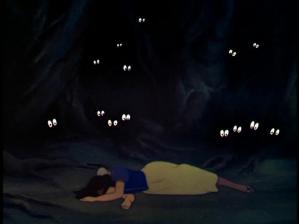

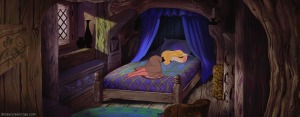
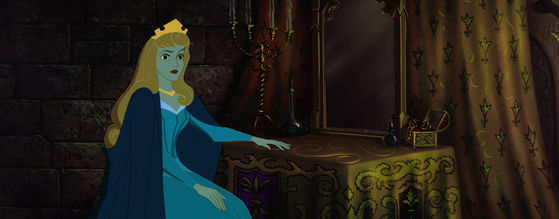
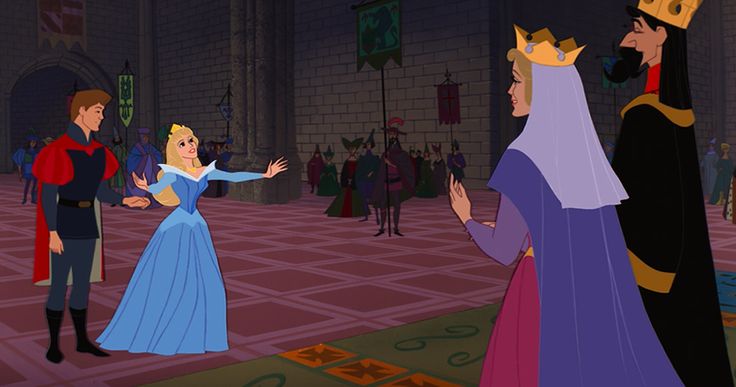

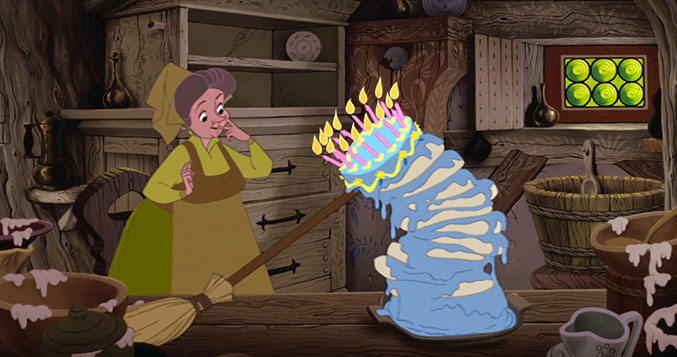

10 comments